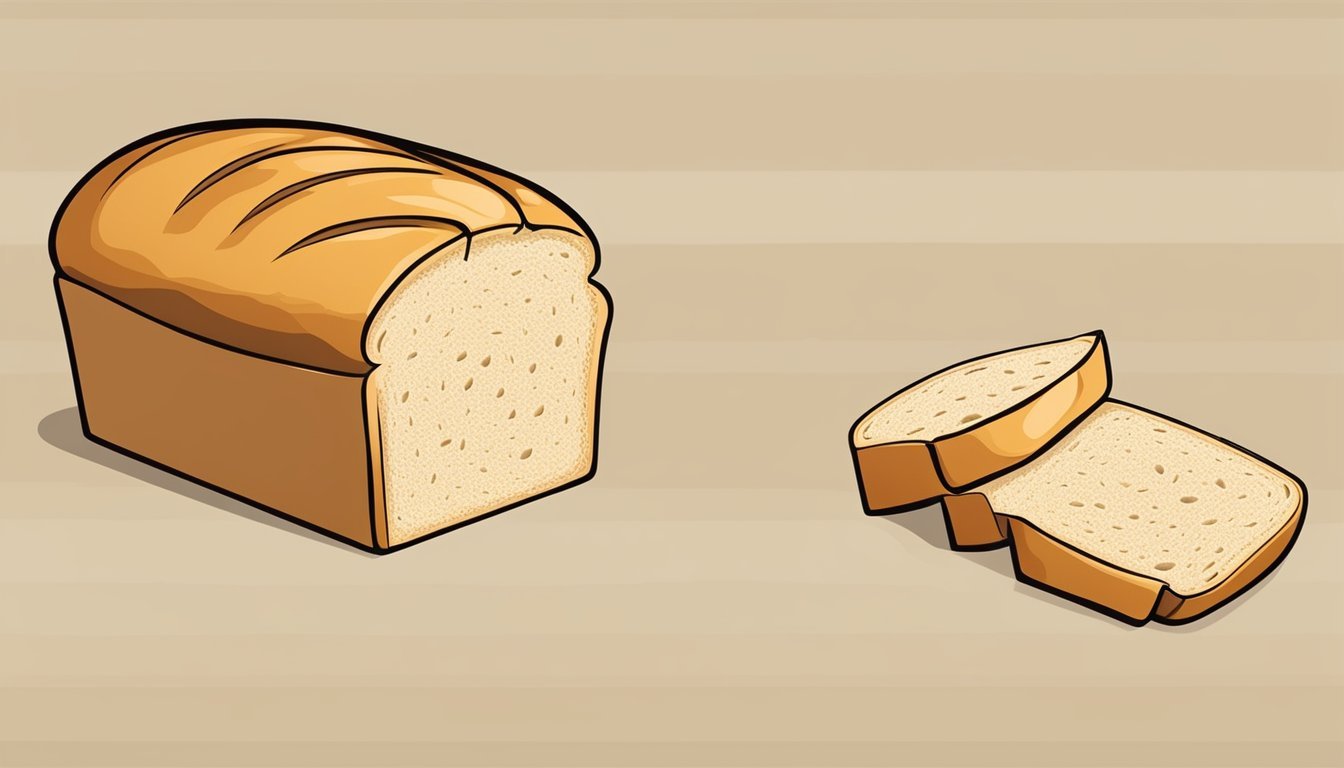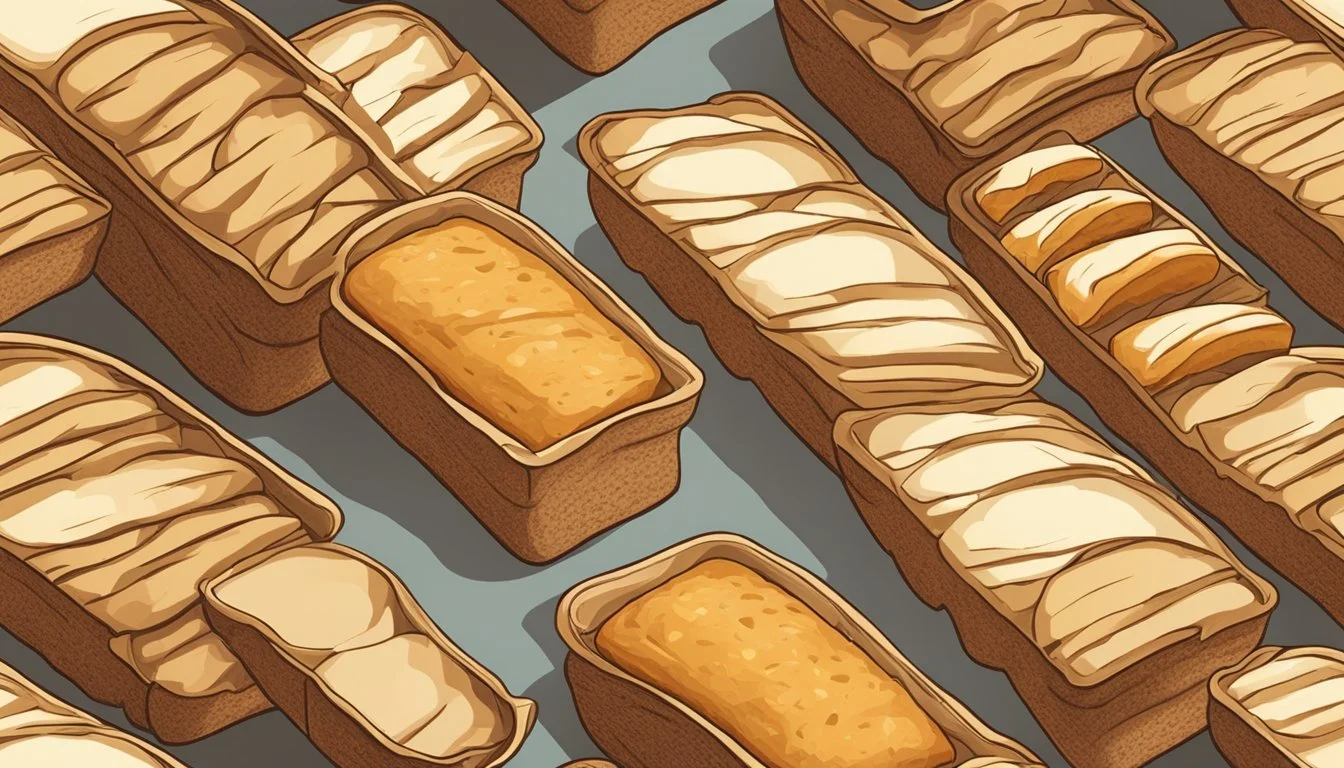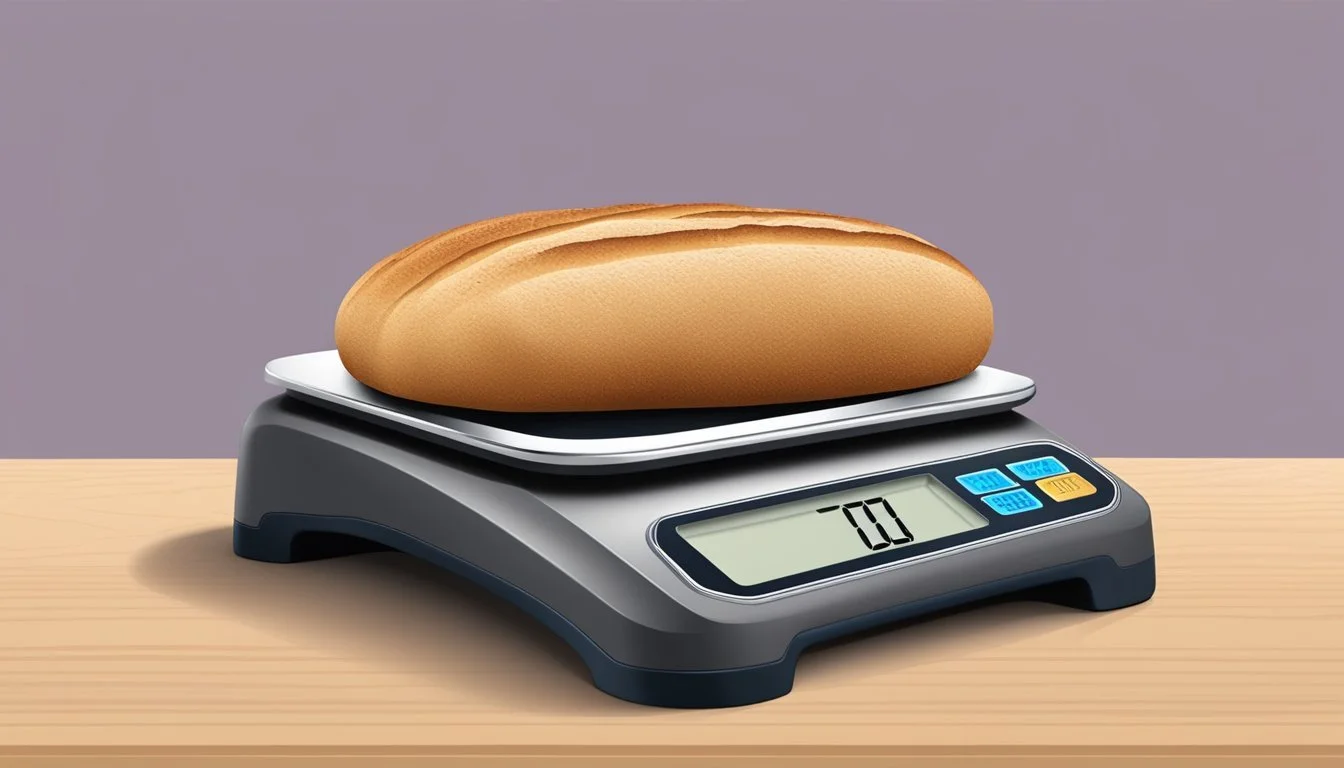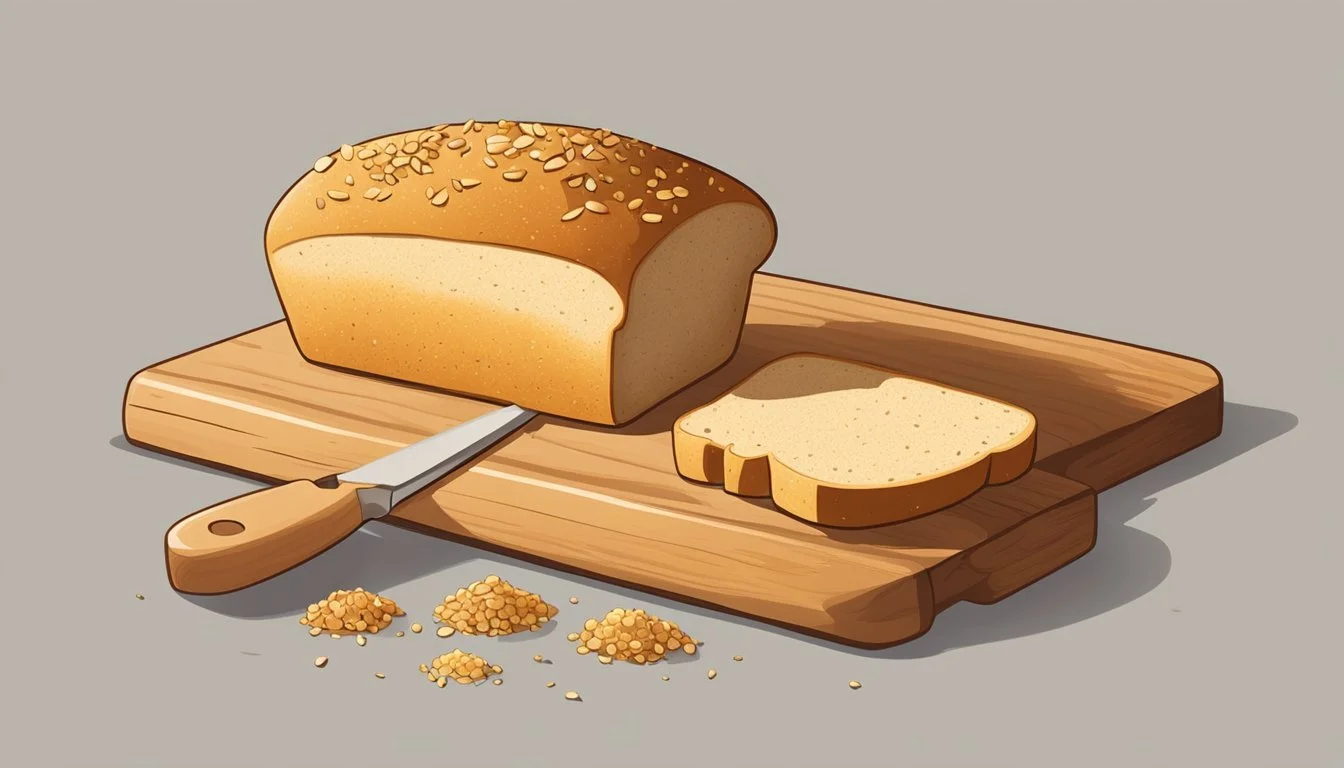How Many Ounces in a Slice of Bread?
Understanding Bread Weight Measurements
Determining the weight of a slice of bread (What wine goes well with bread?) depends on various factors, including the type of bread and the thickness of the slice. On average, a slice of commercially packaged white or wheat bread weighs approximately 1 ounce, which aligns with common serving sizes and nutritional information typically listed on packaging labels.
Artisan breads, such as sourdough or rye, may vary more significantly in weight due to their density and the way they are hand-cut. A slice of these types of bread can weigh anywhere from 0.75 to 2 ounces, with some artisanal slices reaching even heavier weights. For those who bake bread at home or purchase it from bakeries where slices are not uniform, it's not uncommon for a slice to vary from the standard ounce measurement.
In dietary planning and culinary recipes, understanding the weight of a slice of bread is important since it affects caloric intake and portions. Considering a bread's specific characteristics and how it is cut can provide a more precise measurement, which is particularly useful for those tracking their food intake for health or fitness reasons.
Understanding Bread Basics
The weight and nutritional content of bread can vary significantly based on its type, ingredients, and preparation process. It is essential for consumers to understand these variables to make informed choices about their bread consumption.
Types of Bread
Bread comes in numerous varieties, each with distinctive textures and flavors. White bread and wheat bread are common in many households, typically weighing around 1 ounce per slice. Whole grain varieties, such as whole wheat bread, offer a denser texture and more fiber. Specialty bread like sourdough and rye bread have unique flavors; sourdough can be heavier, sometimes reaching up to 60 grams per slice. French bread, artisan breads, garlic bread, and cinnamon swirl varieties enrich the spectrum of choices, meeting diverse preferences and dietary requirements.
Ingredients and Nutrition
Bread ingredients generally include flour, water, yeast, and salt. Additional ingredients like whole grain elements, sugar, fat, and eggs can alter the taste, texture, and nutritional value. A slice of bread's calorie count may range widely, with a typical slice providing calories, carbohydrates, minimal protein, and varying levels of fats. Iron and other nutrients can be found in enriched varieties such as whole grain bread.
Nutritional Content of Common Bread Types:
Type of Bread Approx. Calories Fiber (grams) Protein (grams) White Bread 70-80 1 2 Wheat Bread 80-90 2 3 Whole Wheat 100-110 3 4 Sourdough 80-100 1-2 3-4
Bread Making Process
Creating bread involves a basic process of mixing ingredients, beating to develop gluten for texture, and then baking. A kitchen scale can prove indispensable in the home for replicating professional recipes, as precise measurements are crucial. Yeast, a core ingredient, initiates fermentation to leaven the bread. Homemade bread allows for customization in terms of whole grain ingredients and the reduction of additives compared to store-bought bread. For those learning to bake, it's important to understand the balance between ingredients and the impact of kneading and proofing on the final product's density and flavor.
Characteristics of Bread Slices
When assessing the weight of bread slices, it is essential to consider factors such as density, moisture content, and slice thickness, which can all influence the ounce equivalent.
Density and Moisture
The texture of bread slices is directly affected by their density and moisture content. For example, sourdough bread typically has a higher density and moisture content, which can increase the weight of a slice. In contrast, white bread is often less dense due to its airier texture. Whole grain bread contains more moisture, as the grains retain water, which makes it denser and potentially heavier per slice.
Thickness Measurement
Slice thickness plays a crucial role in determining the weight of a bread slice. A standard slice from a bread slicer or evenly cut with a bread knife can weigh around 28 grams, which is approximately 1 ounce. However, a thicker slice of bread, such as sourdough, can weigh up to 60 grams, or slightly over 2 ounces, while a thin slice, often found in loaves like rye bread, might only weigh around 16 grams or just above 0.5 ounces.
Serving and Usage
The serving size and yield of bread in slices can vary, impacting the ounce equivalent. When considering slices of bread for a meal, one should note the type and thickness to estimate the serving weight accurately. A single slice of white bread typically serves as a 1-ounce serving, while denser bread like whole grain or sourdough may require less or more slices to meet the same ounce equivalent.
Determining Weight of a Bread Slice
The weight of a bread slice is generally measured in ounces and can vary based on different factors, including the bread type, density, and thickness of the slice. A kitchen scale can provide the most specific weight for individual slices.
Average Weight Factors
Density of Bread: Heavier breads like whole wheat or bran bread tend to weigh more due to the denser nature of their ingredients.
Slice Thickness: A thicker slice means more bread and, subsequently, a greater weight. Standard store-bought bread typically maintains a consistent thickness, which corresponds with a more predictable weight.
Bread Weight Variations
The weight of different types of bread slices can range significantly:
White Bread: Approximately 0.88-1.06 oz per slice
Whole Grain Bread: Generally between 1.23-1.4 oz per slice
Sourdough: Often heavier, around 1.76-2.11 oz per slice
These weights may fluctuate for store-bought bread, and deviations are more common in homemade bread owing to less controlled conditions during preparation.
Weighing Techniques
To determine the weight of a bread slice:
Use a Kitchen Scale: This is the most accurate method to measure the specific weight of bread.
Refer to Packaging: For store-bought bread, one can often find the average weight per slice mentioned on the package, which can be helpful for an approximate weight measurement without the need for a scale.
Nutritional Aspects
The nutritional aspects of a slice of bread vary widely based on the type of bread and ingredients used. Different breads offer varying levels of calories, macronutrients, and dietary fiber, which can impact dietary considerations like managing celiac disease or wheat allergies.
Dietary Considerations
For those with celiac disease or wheat allergies, the choice of bread is crucial. Bread made from wheat contains gluten, which must be strictly avoided by individuals with these conditions. Instead, they should opt for gluten-free alternatives that do not provoke symptoms. Additionally, the nutritional content in terms of fiber, iron, and vitamins can differ significantly. Whole grain breads, which include the germ and bran, tend to offer more in terms of nutrition compared to white breads stripped of these nutritious components.
Caloric and Macro Content
The caloric and macro content in a slice of bread is dictated by its size and the ingredients used. Here's a brief overview expressed in a table format:
Bread Type Calories (approx.) Carbohydrates (g) Protein (g) Fats (g) Fiber (g) White Bread 66-69 12.65-13.16 1.91-1.99 11% of calories ~1 Wheat Bread ~70 ~12 ~3 ~11% of calories ~2 Sourdough Varies Varies Varies Varies Varies Whole Grain Sprouted ~80 ~15 ~4 <1 ~3
Nutrient-rich whole grain breads are very nutritious considering their complex carbohydrate content, higher fiber, and additional protein. They can contribute significantly to daily nutritional requirements, providing sustained energy and aiding in digestion due to their fiber content. Conversely, white bread generally offers fewer nutritional benefits and may contribute to quicker spikes in blood sugar due to its higher refined carbohydrate content.
Practical Guide
Understanding the weight of a bread slice is essential, particularly when following specific recipes or dietary guidelines. A kitchen scale is an invaluable tool in this regard, as it provides the precision needed for consistent results.
Bread Storage Tips
To ensure the longevity of a loaf's freshness and simplify the slicing process, proper storage is key. For bread that will be consumed within a few days, storing it at room temperature in a bread box or airtight container is ideal. They can also consider wrapping the bread in foil or plastic wrap to maintain its moisture content.
For longer-term storage:
Freezing is an effective method. It’s best to pre-slice the loaf using a bread knife or bread slicer before freezing.
Place slices in a single layer on a baking sheet to flash freeze, then transfer them to a freezer-safe bag or container.
To consume, simply remove the required number of slices and thaw at room temperature or using a toaster.
This approach prevents waste and maintains quality, as one only thaws what they need.
Slicing Bread at Home
When slicing bread at home, consistency is important for accurate portioning. A sharp bread knife and steady hand are necessary, or they may invest in a bread slicer for uniform slices. Here’s a step-by-step for manual slicing:
Ensure the bread has fully cooled after baking if it's homemade.
Place the loaf on a cutting board and hold it steady.
Use a sawing motion, not downward pressure, to cut even slices.
For precise weight measurements:
First, zero the kitchen scale with the cutting board on it.
After each slice, place it on the board to check its weight.
By learning to slice bread uniformly at home, they can better regulate portion sizes and adhere to recipe requirements specific to loaf size and weight.
Culinary Applications
In culinary practices, precise ingredients measurement is crucial for recipe success. Understanding the weight of bread by the ounce allows for consistent outcomes, particularly in recipes requiring specific bread amounts.
Bread in Recipes
The weight of bread plays a significant role in recipes that leverage bread as a key ingredient. For instance, bread pudding and stuffing require precisely measured amounts to avoid dishes that are too dry or too moist. Knowing a slice's weight ensures replicable results.
Bread Pudding: A recipe may call for a specific weight, such as 10 ounces of bread, rather than a vague "10 slices," because slice weight can differ between bread types.
Stuffings: Precise measurements ensure the correct bread-to-liquid ratio, with traditional recipes often stipulating bread in ounces or grams.
Different bread types affect the total weight in a recipe:
White Breads typically weigh about 1 ounce per slice.
Whole Wheat slices might be heavier, approximating 1.25 ounces.
Sourdough can vary greatly, with some slices reaching up to 2 ounces due to its denser nature.
Recipes benefit from noting the bread type and associated weight:
Bread Type Average Weight per Slice (oz) White 1 Wheat 1.25 Sourdough 1.5 - 2
Chefs and home cooks alike should assess and adapt bread quantity in a recipe by considering both the slice weight and the bread size to ensure culinary success.
Additional Information
This section provides insight into the nuanced aspects of bread weight and its relevance to consumers. By understanding these details, shoppers can make informed decisions when selecting bread at the bakery or grocery store.
Bread Shopping Guide
When shopping for bread, it's important to consider bread types and their associated weights. Store-bought bread in cities like New York often follows standardized weights, but local bakeries may have more variety in slice thickness and bread density.
White Sandwich Bread: Typically 1 ounce per slice.
Wheat Sandwich Bread: Usually slightly heavier than white, potentially up to 2 ounces.
Artisan Breads (like sourdough): Can be more substantial, sometimes exceeding 2 ounces per slice.
Consumers should look for labeling that might specify weight, especially in more gourmet or specialty bread shops. If baking at home, one has the opportunity to learn about bread weight through personal experience by adjusting slice thickness to preference.
Miscellaneous Facts
Different bread types impact the overall weight per slice due to ingredients and density. Here are some specifics:
Rye Bread: A small slice may weigh around 0.7 ounces, often denser than white bread.
Whole Grain Breads: Denser because of the grains, could weigh more than white bread slices.
It's useful to understand that these weights are approximate and can vary between brands and loaves. Consumers looking to manage their diet or needing exact measurements for recipes would benefit from using a kitchen scale.
Remember, when selecting bread, let these facts guide you to better understand the weight of what you're purchasing and consuming. The weight of a bread slice is just one factor to consider among many, such as nutritional content and taste preferences.








